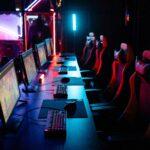The right to repair movement has several benefits, including the reduction of e-waste. This movement will help to slow the growth of e-waste by making it more affordable to recycle old electronics. Biodegradable electronic circuits are one way to reduce the amount of e-waste. Batteries such as lithium-ion are also a waste issue, as they are both dangerous and costly to recycle. In addition, higher consumption rates are fuelling the growth of e-waste.

E-Waste Collection Is Growing Even Though Right to Repair Movement Grows
The right to repair movement is gaining popularity. Apple recently announced its Self-Service Repair program and Microsoft is now enabling consumers to perform DIY repairs on their surface products. The world is creating 53 million tons of e-waste annually, enough to fill 350 cruise ships. Whether it’s a small amount of e-waste or a huge tonnage of electronics, we can all make a difference.
Biodegradable electronic circuits reduce e-waste
The development of biodegradable electronic circuits is in line with the goal of reducing e-waste. These materials are biodegradable in the sense that they will be absorbed by the body, and thus will eliminate the need for a second surgery to remove the device. In addition to reducing e-waste, biodegradable electronics also eliminate environmental and landfill issues. These devices are data-secure and could also be used as temporary implants for surgical procedures.
Lithium-ion batteries are dangerous and expensive for recycling facilities
Lithium-ion batteries are ubiquitous and are a serious problem for recycling facilities. Not only do they emit toxic chemicals, but they also cause fires, which are difficult to put out. Lithium-ion batteries are particularly dangerous for recycling facilities because they are particularly volatile power sources. In fact, they can lead to catastrophic fires, with a resulting cost of more than $1.2 billion.
U.S. laws govern e-waste
There are a number of laws in the U.S. governing the proper disposal of electronic waste. Many of these are aimed at reducing the amount of waste generated. Some are focused on individual products and businesses, while others are broader in scope. A recent law in New York State, A11308, signed into law on May 28, 2010, establishes a comprehensive program for recycling e-waste. It applies to televisions, computers, and computer peripherals, and will go into effect April 1, 2011.
Higher consumption rates of electronics fuel e-waste growth
The global e-waste pile is growing larger. It now stands at over 44 million metric tons, which is almost one million metric tons heavier than China’s Three Gorges Dam. According to the UN’s Global E-waste Monitor 2020, this number is expected to double to 74 million tons by 2030 – a staggering increase in less than 16 years. The growing mass of e-waste is fuelled by higher consumption rates of electronic devices and limited options for repair and recycling.


